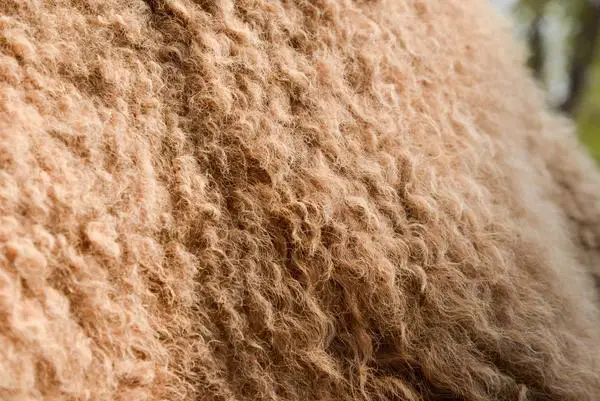Wool is one of nature’s finest insulators. In addition to being warmer than cotton, it dries significantly faster as well. Wool from sheep is the most readily accessible type of wool on the market.
But sheep aren’t the only creatures that manufacture wool fibres. There are other various animals too like goats, bison, camels, etc.
Camel wool is indeed insulating and provides better warmth than sheep’s wool. However, there are other types of wool, such as cashmere or merino wool, that are better in terms of insulation than camel wool.

So let us discuss more about Camel wool.
Wool made from camel hair is a fabric manufactured from a different type of camel found in Asia, in countries like Turkey, China, Siberia, etc. They are called Bactrian camels that have two humps.
And while most camels have short hair, Bactrian camels have significantly longer hair that may be used to make fabrics.
These camels have two types of hair coat:
1.) Guard hair (external coat)- The guard hair is intended to provide protection and warmth to a camel during harsh winters. This hair is strong and stiff, and it can make camels look fuzzier in the harsh winter and the coarse and rough nature of this guard hair makes it unsuitable for fabric production, however it can be made into garments when it is blended with materials such as sheep’s wool.
2.) The undercoat- It is the soft, internal layer of. It is used as insulation by Bactrian camels. Unlike the guard coat, which is used to make particular fabrics, the Bactrian camel hair undercoat is usually used to make clothing.
Camel wool is divided into three categories
High grade wool fibers
The grade of camel hair is determined by the color and fineness of the fibre. The fibres obtained from the camel undercoat are of exceptional quality. They are fine and delicate, with a light brown tint.
And, in order to be termed truly high-grade, it must be derived mostly from the best undercoat fibres. These high-quality fibres are largely employed in the production of consumer products.
Medium grade wool fibers
The medium grade undercoat fibers are longer and coarser than their superior high grade counterparts. These fibres are utilised to make clothing, though the finished goods are often harsher to the touch.
Low grade wool fibers
Low grade fibres are made from the guard coat of the camel hair. These fibres are long, gritty, and brownish-black in tone. Because they are hard and inflexible, they are only ideal for carpets and other firm materials.
How is camel wool produced?
Every year, at the end of summer, the Bactrian camel produces a thick coat of hair. The thickness of this coat increases until midwinter, when it becomes full and strong. The camel’s coat normally sheds in the spring when the frost begins to thaw.
People who breed this type of camel are quite adept at forecasting when the camel hair will begin to come off. This coat keeps the camel warm during the winter.
After the wool has been carded, the next step is to begin spinning it into yarn. In some circumstances, an industrial spinning machine can be used to spin the wool into yarn. After spinning, the yarn is rewashed before being made into fabrics.
Uses of camel wool
Camel hair is known for its insulating properties. It comes with thermostatic characteristics that enable camels to stay warm during freezing cold temperatures of the area that they come from, also simultaneously keeping them cool under the blazing desert sun.
Camel hair fabrics have similar qualities, making it a flexible fabric with a wide range of applications. Scarves, sweaters, jackets, coats, and even undergarments are some of the more typical uses for camel hair.
However, the coarser and rough camel guard hairs are frequently utilised for heavier fabrics like rugs or tents.
What are the environmental impacts of camel wool?
Camel wool is known to be the most environmentally friendly animal fibre. Contrary to what we know of animal rearing for wool, the chances of animals being abused during camel wool harvesting are quite low. That is because only the Bactrian camel loses its hair naturally every year.
Camel wool is harvested and processed without the use of any hazardous chemicals, and it is rarely colored. Even when it is colored, camel wool is manufactured in such low quantities that it has almost no environmental contamination.
Also, camel wool is completely biodegradable, which means that when it is thrown, it does not contribute to pollution.
Cleaning and maintenance of camel wool
To wash the camel wool fabric, it is advisable to wash it by hand to maintain the fabric’s quality and increase its lifespan. But always read the label first, since some camel wool products may be labelled as dry-clean only.
If the label does not mention dry-clean, then you can hand-wash it in a sink with cold water. Remember that camel hair is an extremely delicate fibre, which if not handled carefully, might shrink or damage. Add a mild detergent made for wool to the cold water in the wash bowl and gently mix it in.
Immerse your camel wool clothing in the sink and gently massage it. Let it rest in the detergent water for 30 minutes and then remove the clothing, drain the water from the basin, wash away any residual soap in the basin, and replace the camel wool garment to continue the rinsing process until all of the soap is gone and the water runs clean.
After thoroughly rinsing the clothes, carefully push the water out of it. Be careful not to stretch the fabric by wringing it. Let the fabric air dry on a flat surface and keep it away from direct sunlight.
FAQs-
1.) Does camel wool repel water?
Camel wool is water-resistant in nature, which may be the reason why Mongolian herders use it for jackets and outer coverings.
Camel hair, like lambs wool, wicks away moisture created by perspiration. As a result, there are no chances of mold and mildew to thrive.
2.) Cost of camel wool.
The Bactrian camel hair fabric is one of the most expensive wools available. It is considered a premium fabric, just like cashmere and pashmina, which may be the reason why it is costly.
But there is a reason why camel wool is expensive, it is because it is a fabric that is rarely produced. Owing to its lower popularity, manufacturers do not produce it in large amounts, which is the reason behind its fading popularity among consumers.
Conclusion
While we do not hear about camel wool as often as we hear of other wool products, it does provide great benefits.
Talking about insulation, then we know that camel wool gives us warmth but when compared to cashmere or merino wool, it is not as insinuating as them.
However, it does come with a temperature regulating feature that works according to the climate and temperature.
In this article, we have attempted to include all that we could find about camel wool so that next time you decide to purchase anything made of camel wool, you read this article and are prepared.







